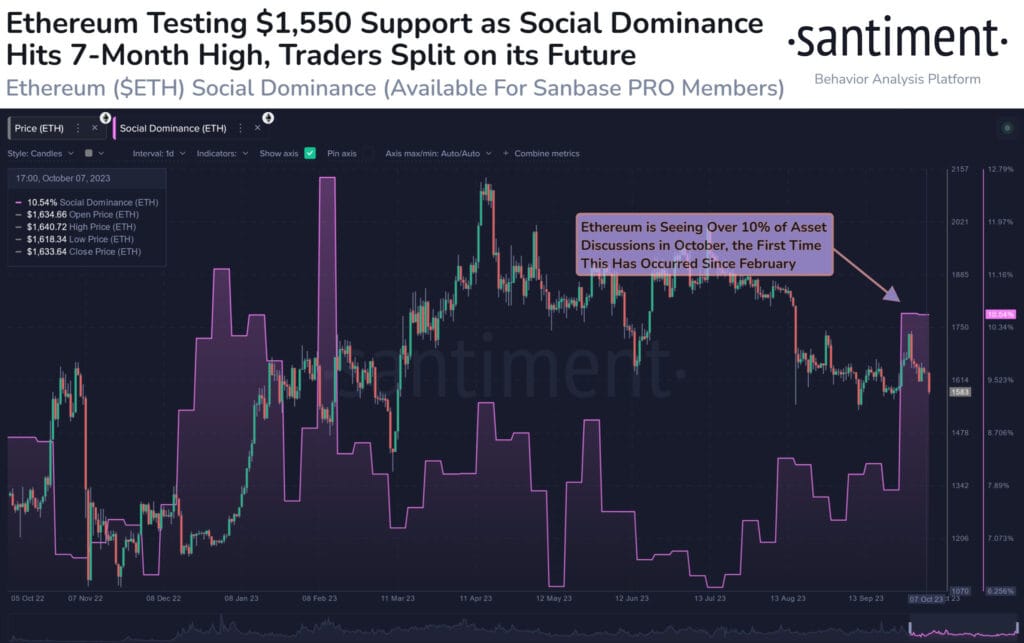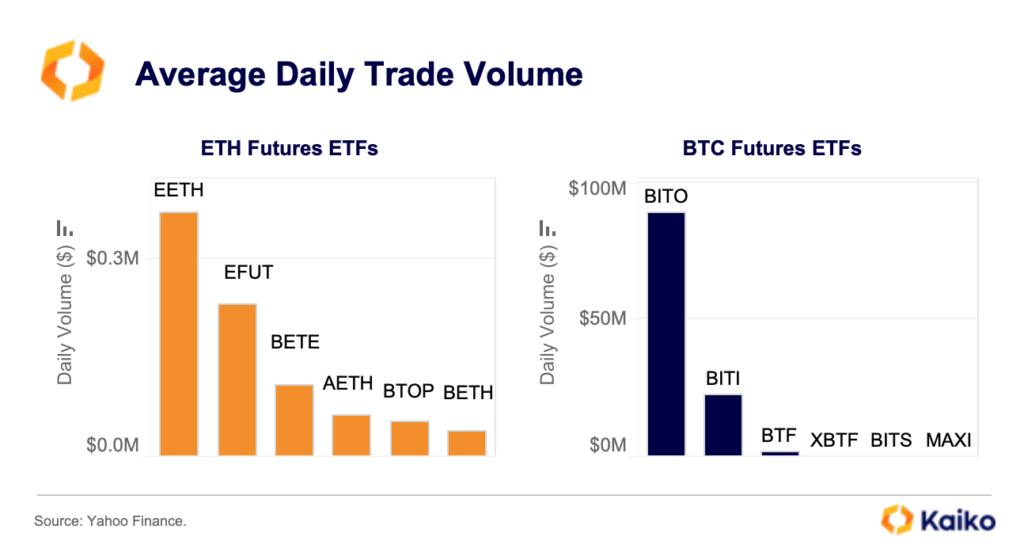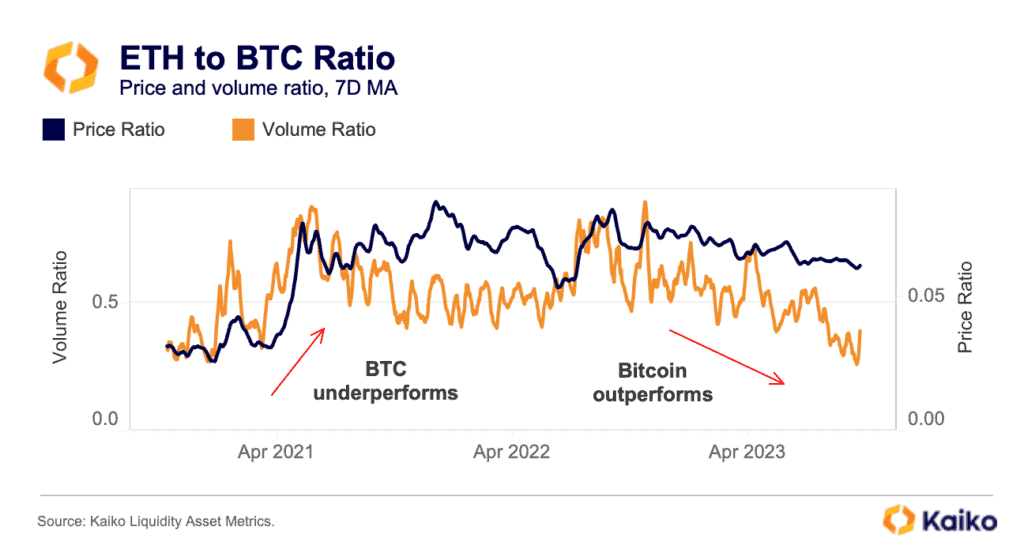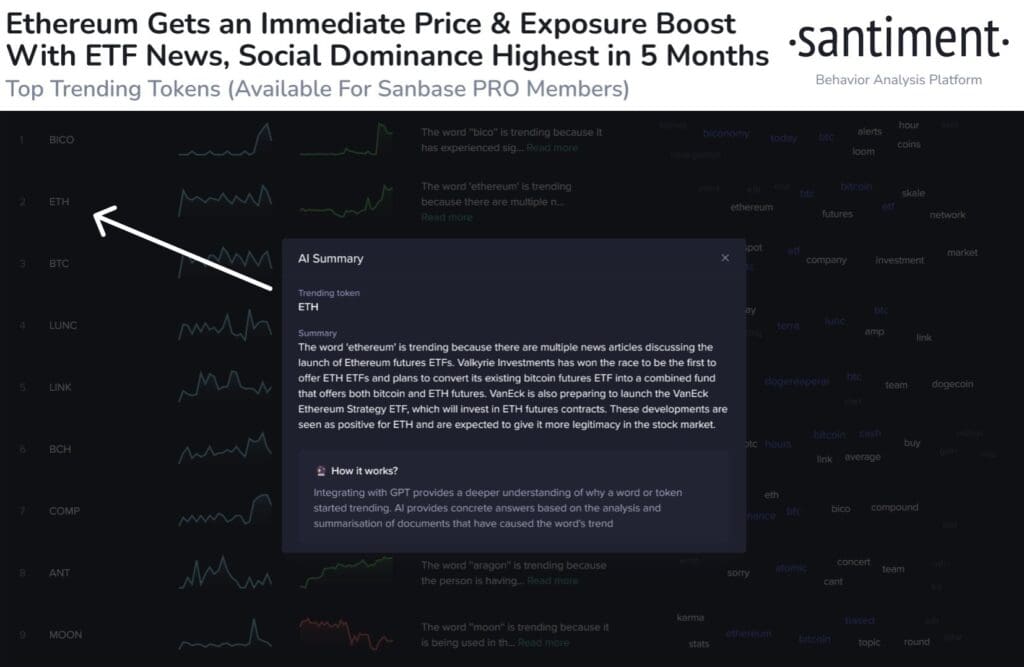Ethereum (ETH) has taken a significant hit, dropping to $1,570, marking its lowest fee level in 2023. This decline has led to growing concerns among traders as Ethereum’s status as the second-largest cryptocurrency by market capitalization becomes an increasingly polarizing topic.
Santiment, a well-known cryptocurrency data analytics firm, has reported on the rising bearish sentiment surrounding Ethereum. While such pessimism might be unsettling for some investors, it often serves as a reliable indicator of a potential market turnaround.

Kaiko Research Report On Ethereum Underperformance
Meanwhile, Kaiko Research has released a comprehensive report addressing the pressing question: “Why is ETH underperforming BTC?” The report delves into the state of Ethereum’s markets following the recent launch of several future ETH Exchange-Traded Funds (ETFs).
Last week, the U.S. Securities and Exchange Commission (SEC) approved six futures-based ETH ETFs to commence trading. However, these ETFs failed to attract significant trading volume or provide a substantial boost to the crypto markets.
The two largest ETFs by trade volume, VanEck’s EFUT and ProShares EETH saw an average daily trade volume of just $0.5 million during their first week, significantly lower than the impressive debut of the first BTC futures ETF, ProShares Bitcoin Strategy (BITO), which surpassed $1 billion in trade volume on its initial trading day.

The report attributes Ethereum’s underperformance to a combination of factors, including the current market environment characterized by rising risk-free rates, strong U.S. economic data, and growing macroeconomic uncertainty. Additionally, none of the ETH ETFs had the advantage of being a first mover like BITO.
Despite some initial price spikes, Ethereum closed the week in the red. Its underperformance relative to the broader market has been evident since the Merge, with both the ETH/BTC price ratio and trading volume trending downwards over the past year. ETH’s spot trade volume has remained relatively stagnant over the past two months, seldom exceeding $2 billion.

While open interest in ETH perpetual futures has risen since early September, funding rates have remained neutral to negative, suggesting a lack of clear market direction.
Nevertheless, the launch of ETH futures ETFs may not have generated substantial trading volume. However, it still provides a liquid, cost-efficient, and transparent means for investors to gain exposure to Ethereum.
Related Reading | Ethereum’s 2023 Potential: Turn Your $100 Weekly into Millions!


